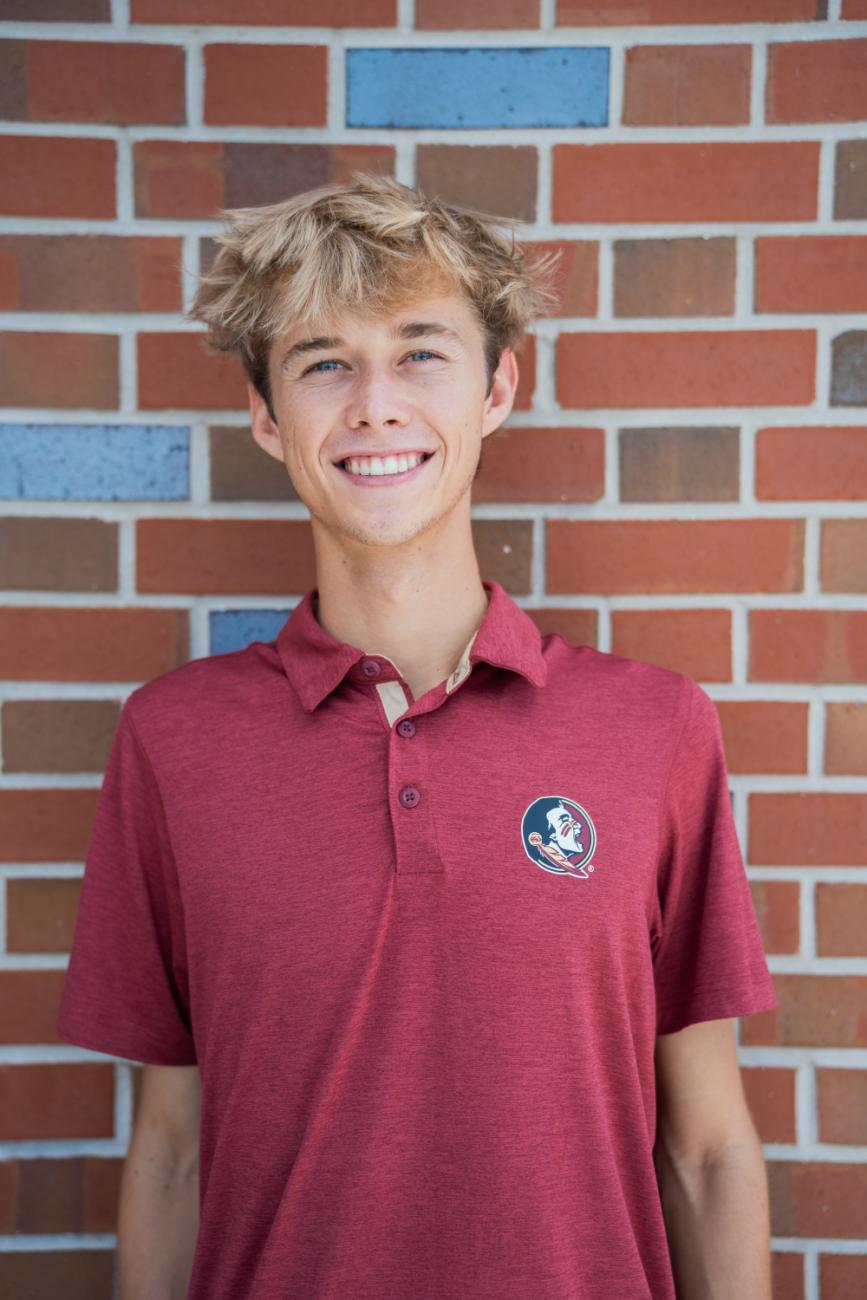Research Symposium
24th annual Undergraduate Research Symposium, April 3, 2024
Blake Bole Poster Session 1: 9:30 am - 10:30 am /336

BIO
Blake is a first year Presidential Scholar studying STEM Entrepreneurship and Finance. Campus involvements include being an active competitor on FSU's Varsity Intercollegiate Debate team, the Alpha Delta Phi fraternity, and FSU's Interfraternity Council and Judicial Board. At home, he enjoys spending time with his brothers and parents fishing, spearfishing, and scuba diving. Blake's career goals will incorporate his aptitude for debate with his passions for technology and finance, as he plans on applying to law school to pursue a specialization in either intellectual property or fiscal law.
Improving the Efficacy of Dye-Sensitized Solar Cells with the use of Organic Dyes
Authors: Blake Bole, Dr. Simon FooStudent Major: STEM Entrepreneurship, Finance
Mentor: Dr. Simon Foo
Mentor's Department: Electrical & Computer Engineering Mentor's College: FAMU-FSU College of Engineering Co-Presenters: Lauren Connell, Holly Denig
Abstract
Due to advancements in technology over the past three decades coupled with the increasing demand for sustainable energy practices, more types of solar cells have been constructed and utilized in recent years. One example of these solar cells is the Dye-sensitized Solar cells (DSSCs), which utilize organic dyes for greater photon absorption. The organic composition of dyes within the dye-sensitized solar cells is less efficient than synthetic solar cells, however, they are cheaper and easier to construct on a small scale. Different dyes used can influence the efficiency of DSSCs because their chemical structures differ (carbazole, coumarin, cyanine, and hemicyanine). Therefore, the purpose of this study is to investigate the efficacy of different organic substances on photon absorption within DSSCs. We hypothesize that the best-performing organic substance will be the juice of raspberries because they contain the chemical anthocyanin which has been shown to increase photon absorption in past studies. We will also be testing dyes with chlorophyll and beta-carotene to make a comparison between the three chemical compositions. If this hypothesis holds, more DSSCs will be constructed with anthocyanin to increase energy conversion efficiency.
Keywords: Photovoltaic, Electric, Electricity, Solar Cell,


